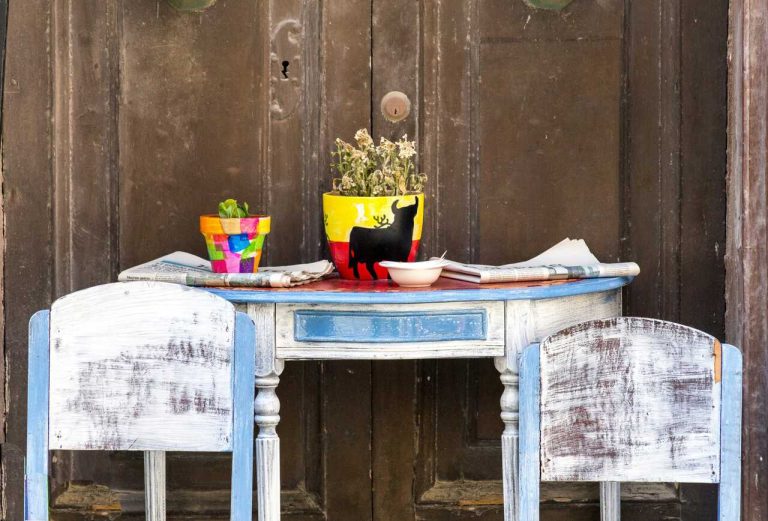
Este o Aquel: Demonstrative Pronouns Explained
DATE:
Did you know that demonstrative pronouns in Spanish give us more insight into the relationship between speaker and listener than you might think? These pronouns—words like “this” and “that” in English—guide the listener to understand the location of something in relation to the speaker and listener. In Spanish, they go a step further with unique forms based on gender, singular/plural distinctions, and relative distance. Mastering these distinctions is essential to sounding natural and precise in Spanish conversations.
What Are Demonstrative Pronouns?
Demonstrative pronouns are words like “this,” “that,” and “those” in English. They work to “demonstrate” or “point out” something specific, clarifying what is being discussed by showing where the item is located relative to the speaker. In Spanish, these pronouns take on different forms based on gender, number, and proximity, making them even more dynamic.
Role of Demonstrative Pronouns in Communication
In Spanish, these pronouns play a crucial role in clear communication, allowing listeners to understand exactly which item or idea is being referenced, whether it’s something the speaker is holding, something the listener can reach, or something far away from both. Mastering these distinctions gives clarity and a natural flow to conversations, enhancing precision and confidence in language use.
Types of Demonstrative Pronouns in Spanish
Demonstrative pronouns in Spanish vary by proximity to the speaker, listener, and their relationship. Let’s break down these types by distance and gender.
Singular Demonstrative Pronouns
Este/Esta
Think closeness. Use este (masculine) or esta (feminine) for objects that are close to the speaker, such as “this book” or “this chair.”
- Example: Este libro (This book) / Esta silla (This chair)
Ese/Esa
For items that are closer to the listener, use ese (masculine) or esa (feminine).
- Example: Ese perro (That dog) / Esa lámpara (That lamp)
Aquel/Aquella
For objects distant from both speaker and listener, use aquel (masculine) or aquella (feminine).
- Example: Aquel edificio (That building over there) / Aquella montaña (That mountain over there)
Plural Demonstrative Pronouns
Estos/Estas
To indicate multiple items close to the speaker, use estos (masculine) or estas (feminine).
- Example: Estos libros (These books) / Estas mesas (These tables)
Esos/Esas
For plural items near the listener, use esos (masculine) or esas (feminine).
- Example: Esos árboles (Those trees) / Esas personas (Those people)
Aquellos/Aquellas
Use aquellos (masculine) or aquellas (feminine) for plural items far from both the speaker and listener.
- Example: Aquellos edificios (Those buildings over there) / Aquellas playas (Those beaches over there)
QUICK NOTE…
The extra layer with aquel (and its variations) requires an extra bit of spatial awareness but provides greater precision!

Usage Rules and Common Mistakes of the Spanish Demonstrative Pronouns
Agreement in Gender and Number
In Spanish, demonstrative pronouns must agree with the noun they replace in both gender and number. This means that if the noun is masculine singular, the pronoun must also be masculine singular.
- Example: Este coche (This car) and Estas casas (These houses)
QUICK NOTE
Always check the gender of the noun to avoid common mistakes, especially with plural nouns. This agreement rule is non-negotiable in Spanish, so attention to detail will help you sound more natural and fluent.
Contextual Considerations in Pronoun Choice
Context is everything when choosing the correct pronoun. Think about the object’s location in relation to the people involved. Use este for items close to the speaker, ese for items closer to the listener, and aquel for items farther from both. Additionally, these pronouns are often used to provide subtle emotional distance or emphasis on the location’s significance.
Demonstrative Pronouns in Everyday Spanish
To understand how demonstrative pronouns work in everyday Spanish, let’s explore some examples that show how each pronoun clarifies an item’s location and relationship to the speaker or listener. These examples will help illustrate when to use este, ese, and aquel based on proximity
Este es mi libro favorito – This is my favorite book.
In this example, este is used because the book is close to the speaker, showing a personal connection or immediacy. Imagine holding the book in your hand as you talk about it. Este conveys that “this” book is right here, within reach, making it feel intimate or relevant in the moment.
Ese es el coche de mi amigo – That’s my friend’s car.
Here, ese points to something closer to the listener than the speaker. Maybe you’re pointing to a car across the street, closer to your friend than to you. This subtle shift in pronoun indicates that the car is “that” one over there, near enough to talk about specifically but not as immediate or personal as something within arm’s reach.
Aquella es la montaña que queremos escalar – That is the mountain we want to climb.
Aquella is used here to refer to a mountain far from both the speaker and the listener. Imagine standing at the base of a valley, pointing toward a distant peak. Aquella helps emphasize that the mountain is “that one over there,” far from either person, conveying a sense of remoteness or distance.
Exercise: Swap the Pronouns and See the Difference
To get a feel for the impact of each pronoun, try replacing the nouns in each sentence with different demonstrative pronouns. Notice how each substitution affects the sentence’s meaning:
- Este es mi libro favorito could become Ese es mi libro favorito to imply that the book is not immediately with the speaker but closer to the listener.
- Ese es el coche de mi amigo could change to Aquel es el coche de mi amigo to suggest the car is now distant from both speaker and listener, maybe at a far-off parking lot.
- Aquella es la montaña que queremos escalar could shift to Esa es la montaña que queremos escalar, suggesting a closer proximity, perhaps the mountain is visible but closer to the listener.
By practicing these substitutions, you’ll see how Spanish speakers can subtly convey spatial relationships and even emotional closeness or detachment simply by choosing the right demonstrative pronoun.
Comparison with English Pronouns
English speakers might find using these pronouns challenging because in English, we often only have two options: “this” and “that.” Spanish adds a third layer, aquel (and its variations), which adds precision and richness in conversational Spanish.
Usage Rules and Common Mistakes
Using demonstrative pronouns in Spanish can come with a few pitfalls. Here are some rules to keep in mind to avoid mistakes:
- Match in Gender and Number: Spanish demonstrative pronouns must match the gender (masculine or feminine) and the number (singular or plural) of the noun they refer to. If a noun is masculine and singular, like libro (book), then este would be the correct pronoun. For a plural feminine noun like casas (houses), the correct pronoun is estas.
- Using Demonstrative Pronouns as Adjectives: Remember that demonstrative pronouns can function as adjectives. When this happens, they change their role slightly and become demonstrative adjectives, which means they directly modify a noun rather than replace it.
- Example: Esta silla (This chair) – Here, “esta” modifies the noun “silla” directly.

Ready to Conquer Spanish Pronouns?
Learning Spanish demonstrative pronouns is like adding an extra layer of precision to your Spanish toolbox. With este, ese, and aquel, you’re now equipped to point out anything, anywhere, with total accuracy. Now that you know the ins and outs of demonstrative pronouns, it’s time to put them into practice and make them a natural part of your Spanish conversations.
For additional help mastering demonstrative pronouns, why not take it a step further with SpanishVIP? Start with a free private class or a 7-day free trial of our group classes to kickstart your Spanish skills and see your progress take off.








